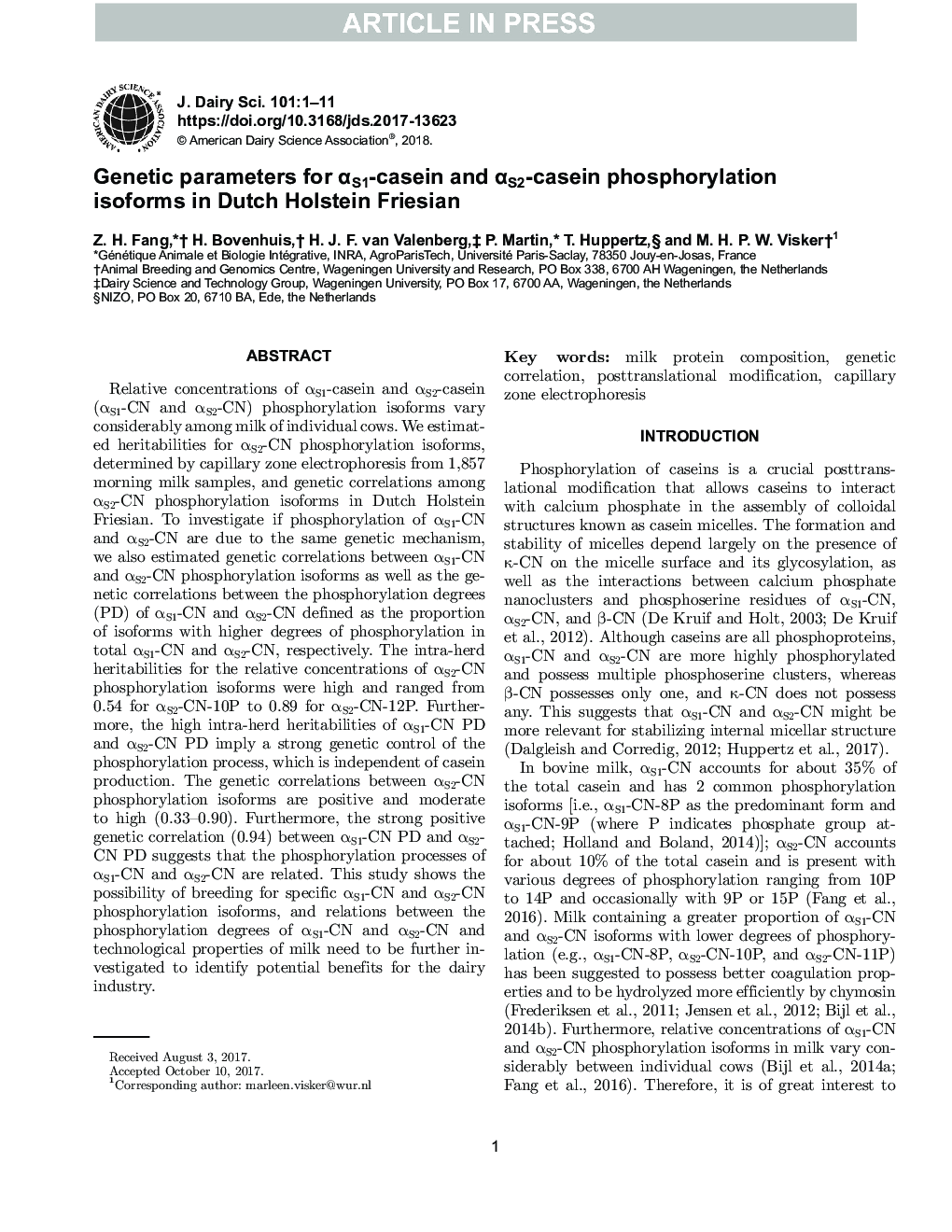| Article ID | Journal | Published Year | Pages | File Type |
|---|---|---|---|---|
| 8501597 | Journal of Dairy Science | 2018 | 11 Pages |
Abstract
Relative concentrations of αS1-casein and αS2-casein (αS1-CN and αS2-CN) phosphorylation isoforms vary considerably among milk of individual cows. We estimated heritabilities for αS2-CN phosphorylation isoforms, determined by capillary zone electrophoresis from 1,857 morning milk samples, and genetic correlations among αS2-CN phosphorylation isoforms in Dutch Holstein Friesian. To investigate if phosphorylation of αS1-CN and αS2-CN are due to the same genetic mechanism, we also estimated genetic correlations between αS1-CN and αS2-CN phosphorylation isoforms as well as the genetic correlations between the phosphorylation degrees (PD) of αS1-CN and αS2-CN defined as the proportion of isoforms with higher degrees of phosphorylation in total αS1-CN and αS2-CN, respectively. The intra-herd heritabilities for the relative concentrations of αS2-CN phosphorylation isoforms were high and ranged from 0.54 for αS2-CN-10P to 0.89 for αS2-CN-12P. Furthermore, the high intra-herd heritabilities of αS1-CN PD and αS2-CN PD imply a strong genetic control of the phosphorylation process, which is independent of casein production. The genetic correlations between αS2-CN phosphorylation isoforms are positive and moderate to high (0.33-0.90). Furthermore, the strong positive genetic correlation (0.94) between αS1-CN PD and αS2-CN PD suggests that the phosphorylation processes of αS1-CN and αS2-CN are related. This study shows the possibility of breeding for specific αS1-CN and αS2-CN phosphorylation isoforms, and relations between the phosphorylation degrees of αS1-CN and αS2-CN and technological properties of milk need to be further investigated to identify potential benefits for the dairy industry.
Keywords
Related Topics
Life Sciences
Agricultural and Biological Sciences
Animal Science and Zoology
Authors
Z.H. Fang, H. Bovenhuis, H.J.F. van Valenberg, P. Martin, T. Huppertz, M.H.P.W. Visker,
